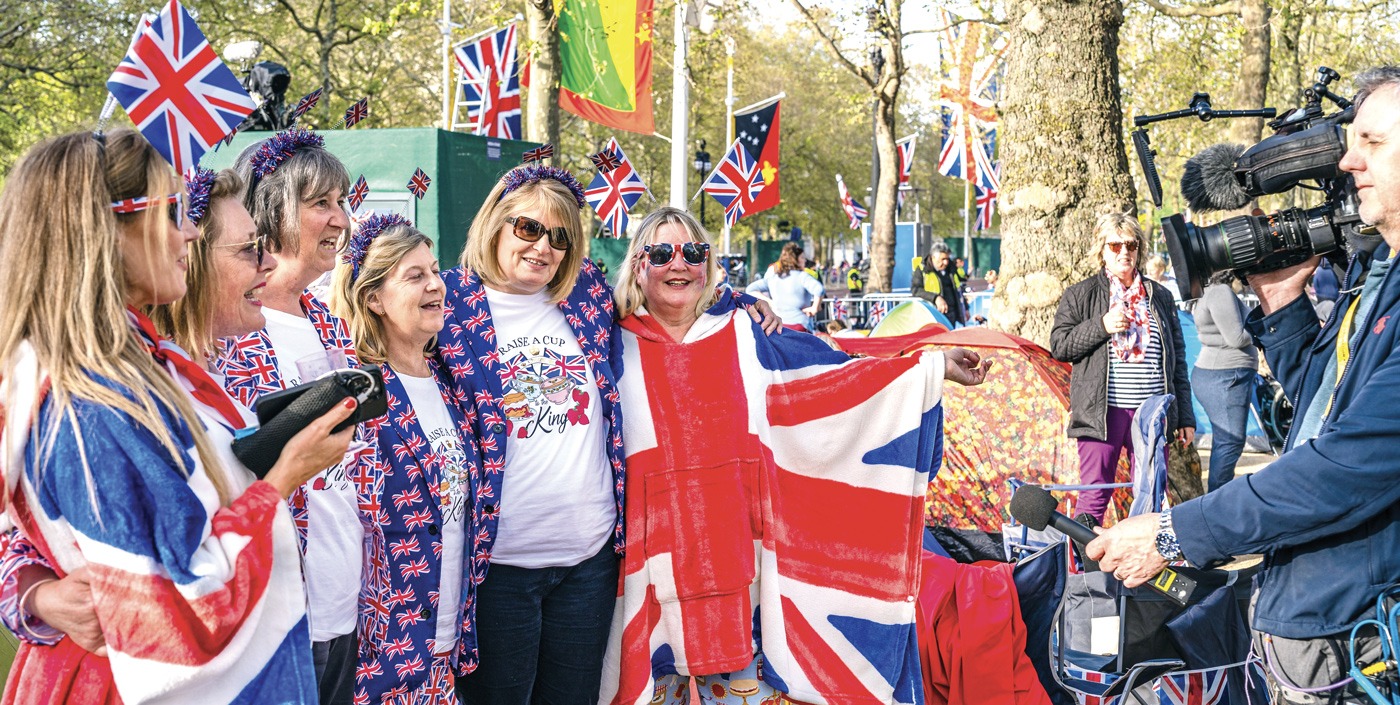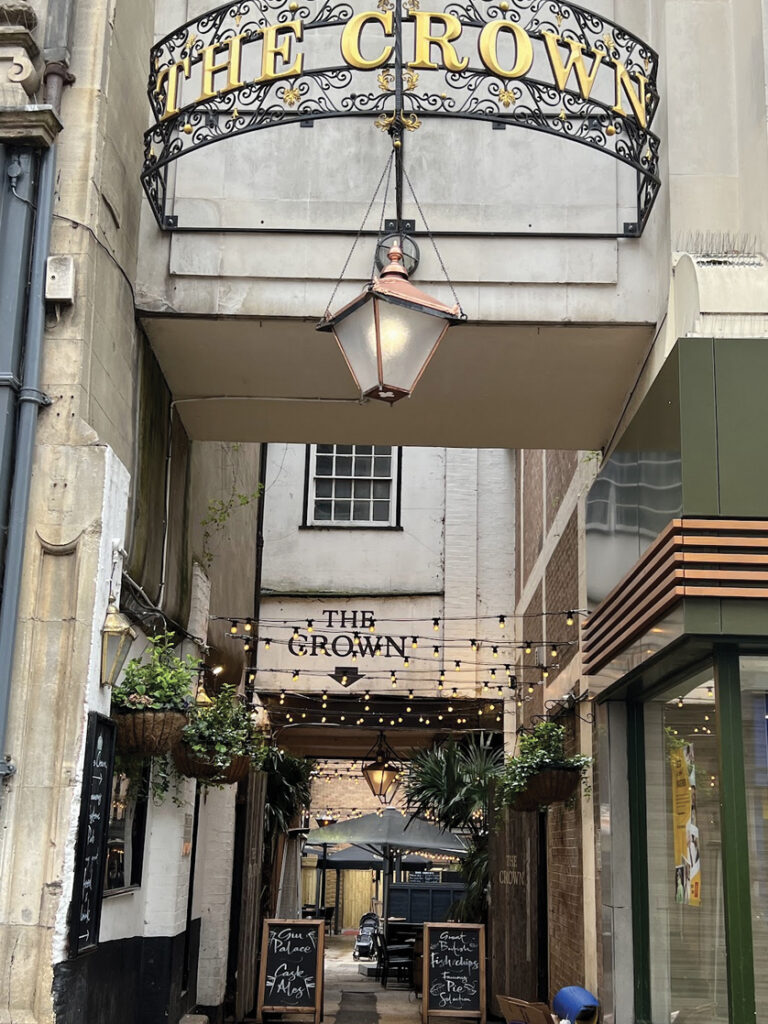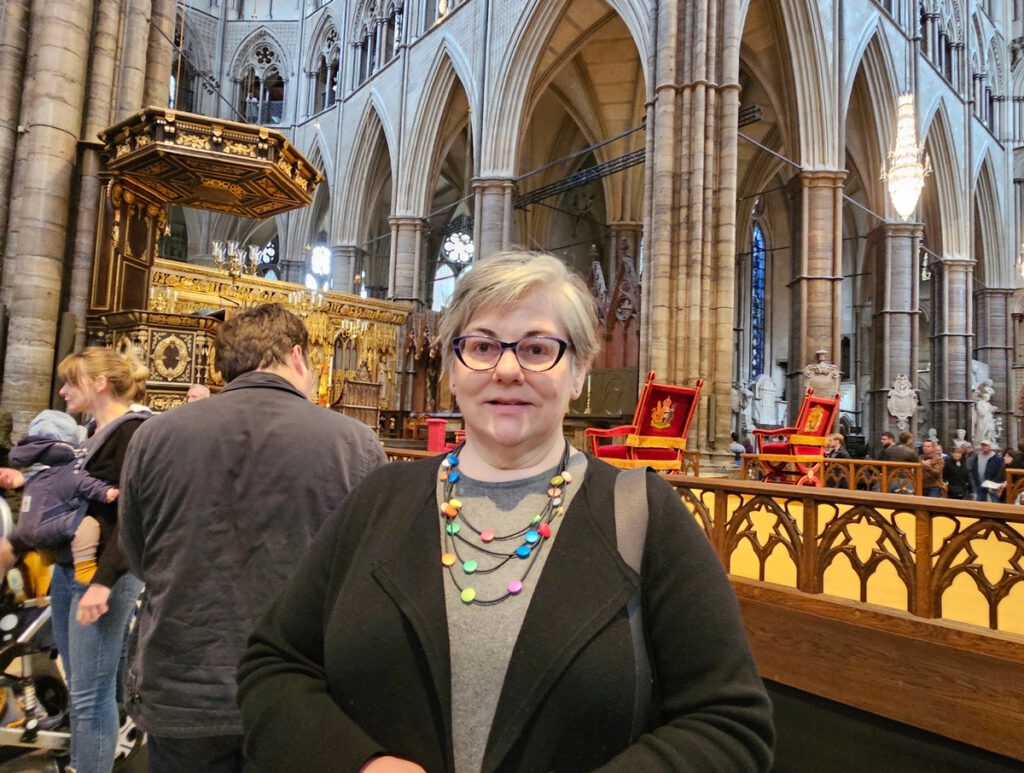Pomp, Pubs and a Staggering Amount of Champagne: Covering the Coronation

Patricia Treble
The esoteric world of royalty has filled my life for more than four decades. It started as an interest, became a passion, and finally, a journalistic career. Covering the royals from Canada allows for a more detached, analytical study of the changes in the House of Windsor than the perspective of those who track the ins and outs of daily engagements and the trivialities that seem to increasingly dominate social media.
The pandemic ended my annual journeys to the United Kingdom, so, after covering the funeral of Queen Elizabeth II from network studios and my office in Toronto, I knew that I had to be in London for the coronation of King Charles III, the first in 70 years and the only coronation ceremony among European monarchies. In addition, he’s our head of state, the King of Canada, as well as head of the Commonwealth. I knew I’d never get inside Westminster Abbey to report on the coronation on May 6, but having spent months researching arcane details such as the difference between the Robes of State and the Robes of Estate, I wanted to be in the United Kingdom to absorb the atmosphere and immerse myself in all things coronation.
What interests me the most is how coronations have evolved since the first was held at Westminster Abbey in 1066. The format of this coronation promised to be much different than the last, in 1953, which hewed closely to those of Queen Elizabeth II’s father, grandfather and great-grandfather. For one, organizers trimmed an hour of fusty protocol so, unlike 1953, when all the royal dukes and senior peers individually pledged their allegiance to the young Queen, this time only the monarch’s heir, Prince William, knelt to swear to be his “liege man of life and limb.” In addition, this eco-King deliberately recycled precious thrones and garments, including the fabulously-named gold silk Supertunica and the more humble, linen Colombium Sindonis.
The world of Crown research is small and remarkably collegial. When David Torrance, a clerk in the House of Commons library in London, got his hands on a book listing the 8,000 guests of 1953 coronation, he kindly sent me photos of the pages devoted to Canadian guests – more than 360 took ships across the Atlantic. In return, I sent him details of the Canadian delegation, led by Governor General Mary Simon and Prime Minister Justin Trudeau, our coronation cypher and other tidbits, which he incorporated in his exhaustive, continuously updated research briefing paper, “The Coronation of King Charles III and Queen Camilla.”
By the time I boarded my flight to London in late April, my carry-on bag was groaning with essentials, including technology for video interviews and essential coronation research, including original programs from the four coronations of the 20th century.

The entire two-week trip – which went from Windsor to London, then to Oxford, before going back to London for one last day – was centered around the coronation and the Crown. Though my travel companion isn’t a monarchist, her love of history overcame any qualms about taking part in such a House of Windsor-centric vacation, including only drinking in pubs with royal names, among them the historic Princess Louise in Holborn, London, and a local watering hole hidden down an alley in Oxford named the Crown. “You came over from Canada for this?” asked a bemused bartender at the Crown. We also met Brits who planned their own vacations around the coronation, including Jen and Scott Maslin, who took a week from their jobs in Liverpool to watch the coverage with thousands in Hyde Park. “We might not get another chance,” Jen explained. “When William is on the throne, we’ll be too old to sit in a field.”
As a freelancer, I’d spent months lining up writing and interview opportunities for the trip, including writing four stories on different coronation topics for four separate publications as well regular updates to my own Write Royalty newsletter on Substack. An increasingly important part of that work involves thinking about what to put in social media posts or future stories. So, after dining with a royal editor at the eclectic Bill’s restaurant in the Victoria area of London, we ambled down to Parliament to capture the coronation-themed light show projected onto the Elizabeth Tower.
Our itinerary was laden with coronation-themed events, such as a small show at Canada House put on by Library and Archives Canada that included an encrypted telegram dated Nov. 17, 1948, from King George VI, who thanks his Canadian PM Louis St. Laurent for “your kind message on [the] birth of [my] grandson,” now King Charles III. In addition, a researcher has gone through the records of the King’s 19 visits to Canada since 1970 and created a map showing Charles’s extensive travels, with Manitoba as the standout, with 17 stops.
As well, I ventured into the rarified world of Sotheby’s auction house for its exhibition tied to an upcoming auction of royal-related memorabilia, including a tiny diamond “ER” pin given by Queen Elizabeth II to her maids of honour at her coronation in 1953, which sold for nearly 70,000 pounds. I’d never seen such the brooch before, yet, on this trip, I’d see two in a week, including one worn by Lady Rosemary Spencer-Churchill, daughter of the 10th Duke of Marlborough, which was part of yet another coronation-themed exhibition at her family home of Blenheim Palace in Oxfordshire.

After years of such work trips, I’ve found that following local historical and cultural organizations is a way to discover smaller offerings that fly under the tourist radar, such as the tiny King’s Chapel of the Savoy, hidden behind the eponymous hotel and on ancient lands of the Duchy of Lancaster that belong to the monarch, or a lecture by Dr. Alice Hunt of Southampton University that was held at Gresham College in a medieval hall that somehow survived the Great Fire of 1666 (like the Crown pub, it was hidden in the middle of a block). As Dr. Hunt delved into the reasoning behind the pomp and ceremony of previous coronations, she touched on a subject of interest to me – royal fashion recycling. Dr. Hunt explained how Queen Elizabeth I reused the coronation dress worn by her half-sister, Queen Mary I (Bloody Mary) six years earlier. I’d never heard of that early example of royal recycling, so I went down a research rabbit hole to find that, yes, a costume historian by the name of Janet Arnold identified the recycling by noticing the similarities in their fashion inventories, including a “mantle and kirtle of white cloth of silver, the mantle of estate with a long train, furred through all with powdered ermines and a mantellace of white silk and gold, a kirtle of the same.” Google away.
The day of the coronation itself was spent liveblogging the spectacle for the Toronto Star from my vantage point at one of the four massive viewing sites set up in Hyde Park. The weather did not cooperate, though that didn’t deter thousands from bringing chairs and blankets, novelty hats, lots of homemade baking and a staggering amount of champagne. Yes, everyone got soaked, but it was worth it for the communal experience — hearing the crowd loudly singing “God Save the King” and applauding when Charles III and Camilla were crowned are memories I won’t soon forget.
I try to end trips with a bang, not a whimper, so we went to where the King and Queen had been crowned six days before, the “coronation theatre” of Westminster Abbey, which still had the thrones and Coronation Chair in their May 6 locations in front of the high altar. Then we treated ourselves to a luxurious lunch at Ottolenghi in Marylebone and a stroll through the eclectic Wallace Collection, one of my favourite museums in the world. As we left the next morning, I was exhausted but content. And my luggage was filled with even more research and memorabilia.
Patricia Treble has been writing about the royal family and the Crown for more than two decades, including her Write Royalty newsletter on Substack. She lives in Toronto.
